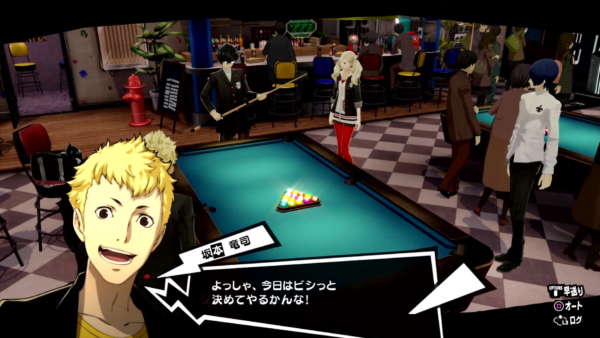However, one aspect of the gameplay is extremely unique and fun, even with a few major flaws is the combat. A turn-based system in regular JRPG fashion but is one of the most experimental forms of turn-based I’ve ever seen. Turns are almost completely simultaneous, yours and the enemies. The beginning of your turn allows your party to make up to three actions per character, being a mixture of support, offense, and defense abilities. Before you issue an attack, a vision of the move is executed in front of you, allowing you to plan what to do next, who to use, what moves to use etc. This vision isn’t always accurate however and is based off the assumption that the attack lands, meaning it can be completely thrown off in execution. The option to allow all four party members issue attacks at once allows for some fantastic strategy. A standard turn could involve one member kicking an enemy into the air, and another teammate activating a move that is only used while an enemy is airborne, finishing with a member using an attack that is only effective when the enemy is down. Each member has a unique weapon with unique moves and properties ranging from downing moves, aerial moves ranged, evasive etc. No two members feel alike and is clearly where most of the thought went into.
Unfortunately, this fantastic combat system isn’t without its flaws. Difficulty is rather subjective, but I feel in this case it is somewhat universal. On the “normal” difficulty that the game starts you on nearly every fight can be won with just mashing “A” and not using any strategy whatsoever. This of course can be mitigated by moving to higher difficulties, but it shows a major disconnect between the ambition of the combat system and the balancing of the said system. Raising the difficulty just increases enemy health and damage and not necessarily their ability to strategize. Due to the enemy placement, most matches will be your four members vs. one enemy. I’d have much rather preferred fighting many enemies at once that are capable of similar strategies rather than one short mediocre fight, over and over . Instead, most fights consist of an enemy squad who seemingly performs random attacks with little to no strategy, easily being blown out of the water by your own.
Another underdeveloped aspect is the social system. On the positive side, social scenes will become available with your main party and offer great insights on their personalities, character development and their insecurities that brought them to Mobius. This is where the writing and characters truly shine and are genuinely enjoyable, giving you a genuine reason to care about your party members. The social system doesn’t end there as every single NPC in the game has one too. That’s right, all 525 of the random students walking around have a social quest to advance through. If you’re a fan of social aspects in games like me, this might excite you but don’t get your hopes up yet.










